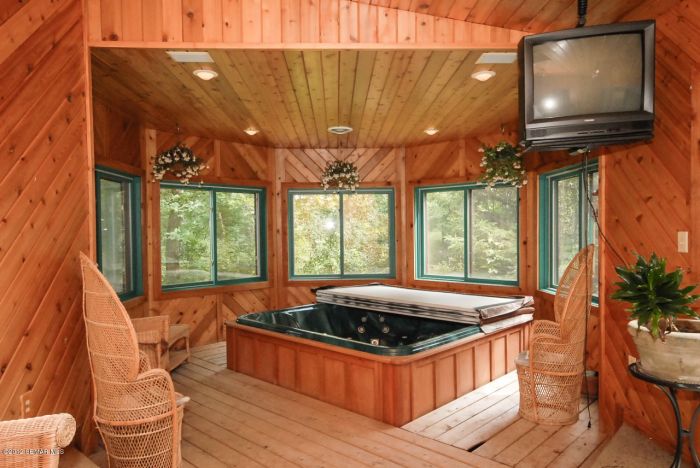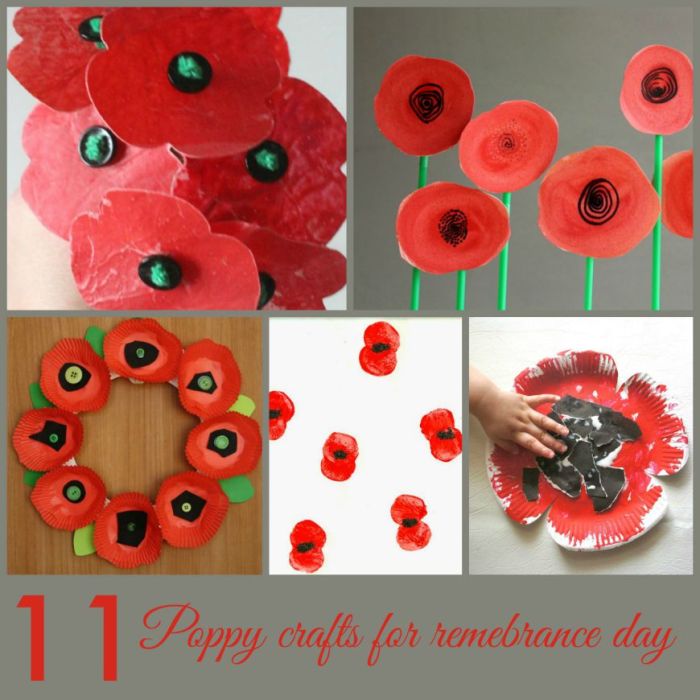Hot tub enclosures ideas – Immerse yourself in the world of hot tub enclosures, where comfort and luxury intertwine. From planning and design to furnishing and maintenance, this comprehensive guide will empower you to create an outdoor sanctuary that elevates your relaxation experience.
Discover the myriad benefits of hot tub enclosures, explore diverse design options, and gain practical insights into building, decorating, and maintaining your private oasis. Whether you seek privacy, style, or functionality, this guide will inspire you to transform your backyard into a year-round haven.
Introduction to Hot Tub Enclosures
Hot tub enclosures are a great way to add privacy, comfort, and style to your hot tub area. They can also help to protect your hot tub from the elements, extending its lifespan.
There are many different types of hot tub enclosures available, so you can choose one that fits your needs and budget. Some popular options include:
Gazebos
- Gazebos are freestanding structures that provide a covered area for your hot tub. They are typically made of wood or metal and can be customized to match your home’s style.
Pergolas
- Pergolas are similar to gazebos, but they have a more open design. They are perfect for adding shade and style to your hot tub area without completely enclosing it.
Screen Rooms
- Screen rooms are enclosed structures that are made of screens. They are a great way to keep out bugs and other pests while still allowing you to enjoy the outdoors.
Planning and Designing Hot Tub Enclosures
Planning and designing a hot tub enclosure is essential for creating a comfortable and functional outdoor space. Consider factors like size, shape, and materials to ensure a perfect enclosure that complements your hot tub and backyard.
Choosing the Right Size and Shape
- Measure your hot tub and allow extra space for movement and access.
- Consider the shape of your backyard and the placement of other outdoor features.
- Choose a shape that complements the architectural style of your home and outdoor décor.
Selecting the Right Materials
The choice of materials depends on your budget, climate, and personal preferences.
- Wood:Natural and durable, but requires regular maintenance.
- Vinyl:Affordable, low-maintenance, and available in various colors and textures.
- Aluminum:Lightweight, rust-resistant, and can be customized with different finishes.
Building a Hot Tub Enclosure
Building a hot tub enclosure is a great way to extend the enjoyment of your hot tub and protect it from the elements. With a little planning and effort, you can build an enclosure that is both functional and stylish.
The first step is to choose a location for your enclosure. The location should be level and well-drained, and it should be close to a source of water and electricity. Once you have chosen a location, you can start planning the design of your enclosure.
Materials
The materials you will need to build a hot tub enclosure will vary depending on the design of the enclosure. However, some common materials include:
- Pressure-treated lumber
- Concrete blocks
- Screws
- Nails
- Roofing shingles
- Gutters
- Downspouts
Steps
Once you have gathered your materials, you can start building your enclosure. The following steps will provide you with a general overview of the process:
- Lay out the foundation of the enclosure. The foundation can be made of concrete blocks or pressure-treated lumber.
- Frame the walls of the enclosure. The walls can be framed using pressure-treated lumber.
- Install the roof of the enclosure. The roof can be made of roofing shingles, metal roofing, or polycarbonate panels.
- Install the gutters and downspouts. The gutters and downspouts will help to keep water from accumulating on the roof of the enclosure.
- Finish the enclosure by adding siding, trim, and paint.
Common Mistakes to Avoid
There are a few common mistakes that people make when building a hot tub enclosure. These mistakes can lead to problems with the enclosure, such as leaks, rot, and structural damage.
- Not using pressure-treated lumber. Pressure-treated lumber is resistant to rot and decay, which is important for an enclosure that will be exposed to the elements.
- Not installing a vapor barrier. A vapor barrier will help to prevent moisture from entering the enclosure and causing damage.
- Not installing gutters and downspouts. Gutters and downspouts will help to keep water from accumulating on the roof of the enclosure and causing damage.
- Not finishing the enclosure properly. Finishing the enclosure with siding, trim, and paint will help to protect it from the elements and extend its lifespan.
Furnishing and Decorating Hot Tub Enclosures
Elevate your hot tub experience by creating a stylish and comfortable enclosure. Furnishings and decorations play a crucial role in setting the ambiance and making your space a true oasis.
When selecting furniture, prioritize comfort and durability. Choose pieces that are weather-resistant and can withstand moisture. Consider lounge chairs, sofas, or ottomans with plush cushions and water-repellent fabrics.
Lighting
Lighting is essential for creating a relaxing and inviting atmosphere. Incorporate ambient lighting with lanterns or string lights to cast a soft glow. Add accent lighting with spotlights to highlight architectural features or focal points.
Accessories
Accessories add personality and enhance the functionality of your enclosure. Include items like throws, pillows, and candles to create a cozy ambiance. Install a small table for drinks and snacks, or add a towel rack for convenience.
Greenery
Incorporate greenery into your enclosure to bring a touch of nature and purify the air. Choose plants that thrive in humid environments, such as ferns, palms, or bamboo. Consider hanging planters or placing potted plants around the perimeter.
Water Features, Hot tub enclosures ideas
Enhance the serenity of your enclosure with a water feature. A small fountain or waterfall can create a soothing ambiance and mask unwanted noise. Choose a design that complements the overall aesthetic of your space.
Maintaining Hot Tub Enclosures

Keeping your hot tub enclosure in tip-top shape is crucial for extending its lifespan and ensuring a pleasant experience. Regular maintenance involves cleaning, debris removal, and protection from the elements.
Cleaning and Debris Removal
Regular cleaning prevents dirt, grime, and organic matter from accumulating on the enclosure’s surfaces. Use a mild detergent and a soft cloth to gently wipe down all surfaces. Pay special attention to areas where water collects, such as the roof and gutters.
For stubborn stains, use a specialized cleaning solution designed for hot tub enclosures.To keep debris out, install a screen or cover over any openings. Regularly sweep or vacuum the enclosure floor to remove leaves, twigs, and other debris that can clog drains or damage the enclosure’s structure.
Protecting from the Elements
Exposure to the elements can take a toll on hot tub enclosures. Protect your enclosure from rain, snow, and wind by applying a sealant or weather-resistant coating. Inspect the roof and walls for any cracks or damage that could allow water to penetrate.During
extreme weather events, such as hurricanes or heavy snowfall, take additional precautions. Cover the enclosure with a tarp or inflatable shelter to minimize wind damage. Clear away snow from the roof to prevent collapse.
Hot Tub Enclosure Ideas for Different Climates
When designing a hot tub enclosure, it’s essential to consider the climate in your area. Different climates require different materials and design features to protect your hot tub from the elements.
In cold climates, an enclosure will need to be well-insulated to prevent heat loss. You may also want to consider adding a heater to the enclosure to keep the temperature comfortable. In hot climates, an enclosure will need to be well-ventilated to prevent the hot tub from overheating.
You may also want to consider adding a shade structure to the enclosure to protect it from the sun.
Materials for Hot Tub Enclosures in Different Climates
- Cold climates:Use insulated materials such as wood, vinyl, or metal. These materials will help to keep the heat in and the cold out.
- Hot climates:Use breathable materials such as canvas, mesh, or lattice. These materials will allow air to circulate and prevent the hot tub from overheating.
Design Features for Hot Tub Enclosures in Different Climates
- Cold climates:Include a roof to protect the hot tub from snow and rain. You may also want to consider adding walls to the enclosure to block the wind.
- Hot climates:Include a shade structure to protect the hot tub from the sun. You may also want to consider adding a fan to the enclosure to circulate the air.
Hot Tub Enclosure Ideas for Different Styles
Hot tub enclosures can be designed to complement the style of any home. From traditional to modern, there is an enclosure that will fit your needs.
The type of materials used to create the enclosure will also affect its style. Wood is a popular choice for traditional enclosures, while metal and glass are more modern.
Materials for Different Styles
- Traditional:Wood, stone, brick
- Modern:Metal, glass, concrete
- Rustic:Wood, stone, logs
- Mediterranean:Stucco, tile, wrought iron
- Asian:Bamboo, rice paper, stone
When designing an enclosure, it is important to consider the overall style of the home. The enclosure should complement the home’s architecture and landscaping.
Hot Tub Enclosure Ideas for Small Spaces

Creating a relaxing and private hot tub enclosure in a small space requires careful planning and design. By choosing the right materials, maximizing space, and incorporating creative solutions, you can create a cozy and inviting retreat.
Enclosure Materials for Small Spaces
When selecting materials for a small hot tub enclosure, consider durability, space-saving features, and aesthetics. Options include:
- Glass: Frameless glass panels offer a sleek and modern look while allowing natural light to enter.
- Vinyl: Vinyl curtains or panels provide privacy and protection from the elements while being lightweight and easy to adjust.
- Wood: Compact wooden panels or trellises can create a cozy and rustic atmosphere, but require regular maintenance.
Hot Tub Enclosure Ideas for Privacy
When it comes to creating a relaxing and private hot tub experience, an enclosure is essential. Here are some ideas for designing an enclosure that will block out unwanted views and create a secluded sanctuary.
Materials for Privacy
*
-*Wood
Wood is a classic choice for privacy enclosures, offering both durability and aesthetic appeal. Cedar and redwood are popular options due to their natural resistance to rot and insects.
-
-*Vinyl
Vinyl is a low-maintenance material that is available in a variety of colors and textures. It is also waterproof and resistant to fading.
-*Fabric
Fabric can be used to create a more temporary enclosure, such as curtains or a canopy. It is a cost-effective option and can be easily removed when not in use.
Design for Privacy
*
-*Height
The height of the enclosure will determine how much privacy it provides. A taller enclosure will block out more views, but it can also make the space feel more enclosed.
-
-*Spacing
The spacing between the slats or panels of the enclosure will also affect privacy. Closer spacing will provide more privacy, while wider spacing will allow for more airflow.
-*Orientation
The orientation of the enclosure should be considered to minimize exposure to unwanted views. Place the enclosure in a way that blocks out the most visible areas from neighboring properties or public spaces.
Hot Tub Enclosure Ideas for Luxury: Hot Tub Enclosures Ideas
Indulge in an unparalleled spa experience with luxurious hot tub enclosures that exude opulence and tranquility.
To create an exclusive oasis, consider incorporating materials such as rich hardwoods like mahogany or cedar, which provide warmth and durability. Natural stone, such as marble or granite, adds a touch of sophistication and elegance, while tempered glass walls offer unobstructed views of the surrounding landscape.
Design for Serenity
Design an enclosure that fosters relaxation and rejuvenation. Ensure privacy with strategically placed hedges or trellises adorned with lush greenery. Incorporate ambient lighting, such as lanterns or recessed lights, to create a cozy and inviting atmosphere.
Consider adding a water feature, such as a small fountain or waterfall, to enhance the sensory experience and promote tranquility.
Last Word
As you embark on this journey of creating your dream hot tub enclosure, remember that every decision contributes to a harmonious blend of aesthetics and functionality. Embrace the opportunity to design a space that reflects your personal style, complements your home’s architecture, and provides a sanctuary for relaxation and rejuvenation.
With careful planning, meticulous execution, and a touch of imagination, you can transform your backyard into a private paradise where the soothing waters of your hot tub await, inviting you to unwind, recharge, and create lasting memories.
Question Bank
What are the benefits of using a hot tub enclosure?
Hot tub enclosures offer privacy, protection from the elements, extended seasonality, enhanced aesthetics, and increased safety.
What types of hot tub enclosures are available?
Enclosures come in various forms, including gazebos, pergolas, cabanas, and screen rooms, each offering unique features and design aesthetics.
How do I choose the right size and shape for my hot tub enclosure?
Consider the size of your hot tub, the available space in your backyard, and the desired level of privacy and functionality.
What materials are commonly used for hot tub enclosures?
Popular materials include wood, vinyl, aluminum, and fabric, each with its own advantages and drawbacks in terms of durability, aesthetics, and cost.
How do I maintain my hot tub enclosure?
Regular cleaning, inspection, and repairs are essential to ensure the longevity and optimal performance of your enclosure.


